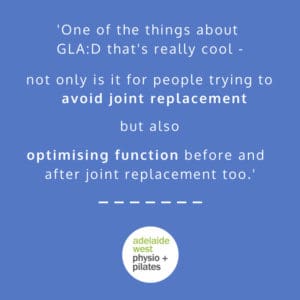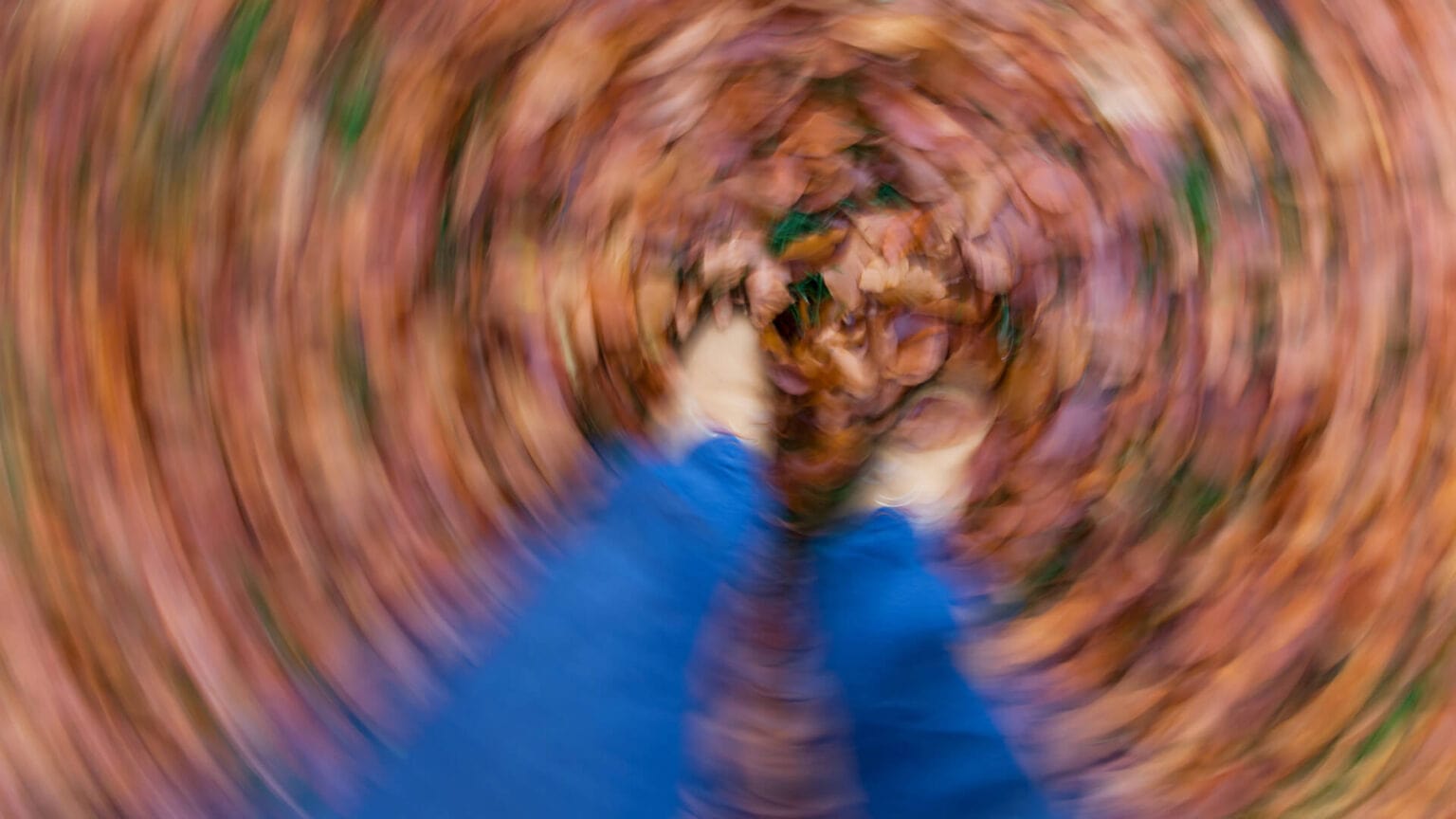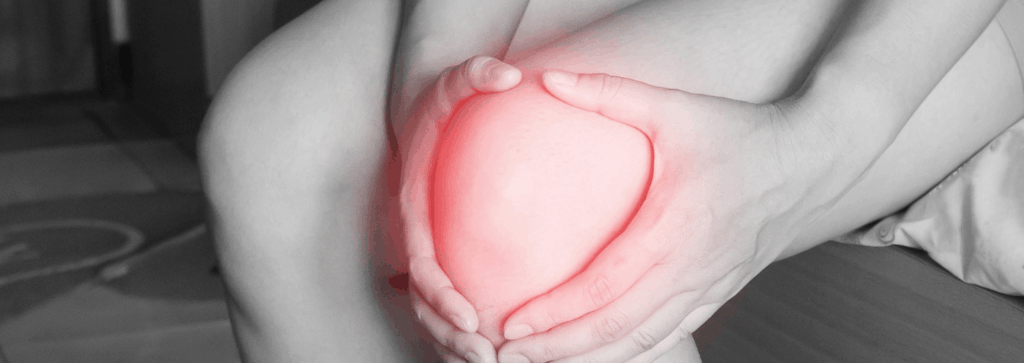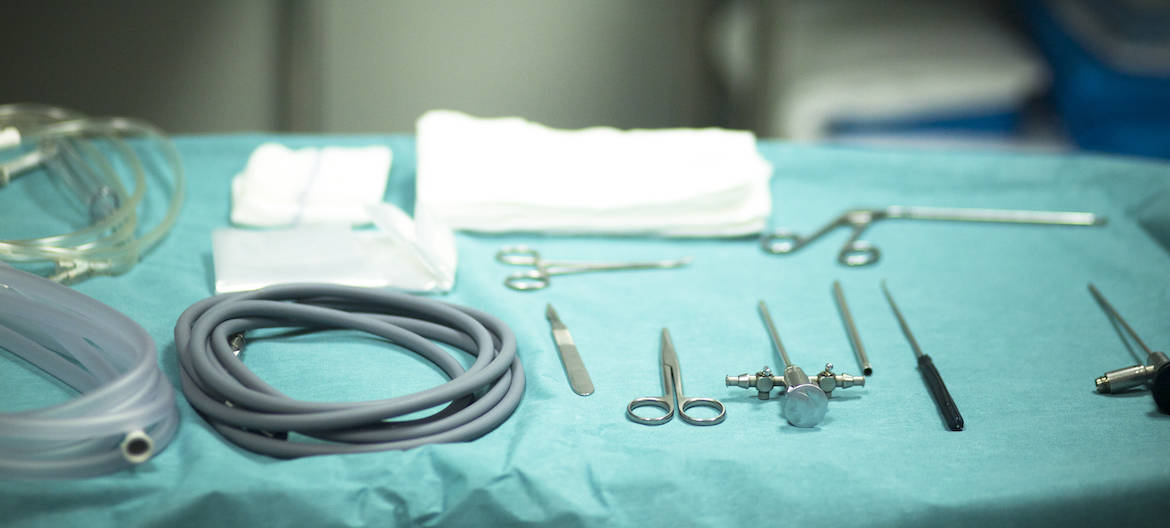And more importantly, is there any benefit to doing the programme. After all, the osteoarthritic joint is no longer there! It has been cut out and replaced.
The short answer is “YES”
We have had a number of people go through GLA:D after having a joint replacement and it has increased their satisfaction with their joint replacement and their overall function and return to their best condition.
Let me explain…
The joint replacement surgery is only half the story
The surgery will be concerned with the joint surfaces. They’ll be replaced with whatever material the surgeon chooses with you. And hopefully the surgery will help out significantly with your pain.
Just as important is what happens after the surgery.
There is the immediate effect of the surgery on your muscle function – the pain from the surgery, the effect on muscles being cut and more. This is probably the most obvious and immediate physio work after your surgery.
However, that is just the start.
You want to fully regain strength, endurance and – most importantly – optimise your function.
The degree to which you regain these things is going to be dictated by how well you work on it post-operatively.
This is the part that the GLA:D programme can help out with. What can you expect?
Results from doing GLA:D if you have had a joint replacement
For the total joint replacement patient, these are the benefits you are going to notice from a well-constructed programme like the GLA:D programme. You can expect to be:
- feeling stronger
- more confident with the demands of your day
- satisfied with the end result
- feeling improvements in the other joints in your legs
- able to go up and down steps more easily
- improved with your balance
- walking with a better gait pattern
Also, you’ll have developed a routine of exercise that you can continue beyond the 6 week programme.
It’s not as if your improvements will stop after the 6 week programme either. You will be able to gain further strength and endurance as you continue with the exercise programme.
Don’t forget, often people have pain in other joints too!
Joint replacement surgery doesn’t directly benefit those other joints. Keep in mind though that the right post-operative programme can definitely help those other joints!
And usually, people aren’t in a huge rush to return to have another joint replacement, so it makes sense to work hard post-operatively to help these joints too.

Do I really need to do a programme like this?
After all, I’ll get exercises after my surgery, won’t I?
That’s correct, you will get exercises after your operation.
After a joint replacement, you are given exercises to do in hospital that are supervised by the hospital physio. These are aimed at the early regaining of range of movement (particularly with a total knee replacement) and early activation of your muscles.
You’ll be given exercises to continue when you get home.
Be aware though, these exercises are only the start if you want to reach your best function and optimal strength.
The other benefits of GLA:D are the focus on the right knowledge about osteoarthritis and pain. For example, we make a focus on helping our patients to understand their pain better and what it actually represents. Perhaps that seems obvious, but most people really don’t understand pain, and if you understand it better, it really helps.
Discussion about healthy eating and weight loss is just as relevant after joint replacement surgery.
We now understand that there are factors in a healthy diet that help reduce pain in arthritis apart from the effect of weight. This is relevant for everyone.
Click here to read more about the benefits of an Anti-Inflammatory Diet.
GLA:D will optimise your function before or after surgery
Not only is GLA:D for people trying to help reduce their pain from osteoarthritis and get themselves moving better. It is perfect for people that are trying to avoid joint replacement surgery.
GLA:D is also for people that are looking to get the best outcome after joint replacement surgery.
In summary, GLA:D will optimise your function before or after joint replacement surgery.
To learn more about the GLA:D programme, click here to get all the information you need!
You can also call us on 8356 1000 if you would like to register your interest in the next intake.
Organise A FREE Physio Phone Consult
Get some FREE ADVICE, find out if physiotherapy can help your problem and give you pain relief, and importantly, find out if we are the right physios for you!
Alternatively, you can organise a free 15 minute assessment in person at the clinic.
To Organise a Phone Call with a Physio
- Option one: Click on the ‘Online Bookings’ button at the top of the page, then choose the ‘Free Physio Phone Consult’ option and find a time that suits you.
-
Option two: Call us on
8356 1000 and organise a time for a call back from one of our physios for a discussion with you about your problem.

















